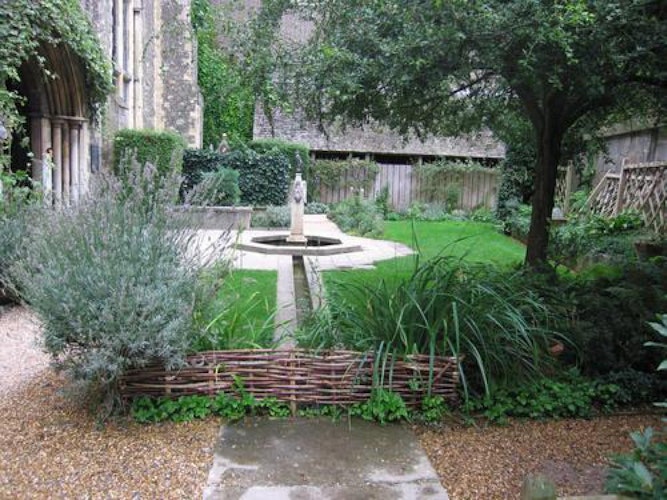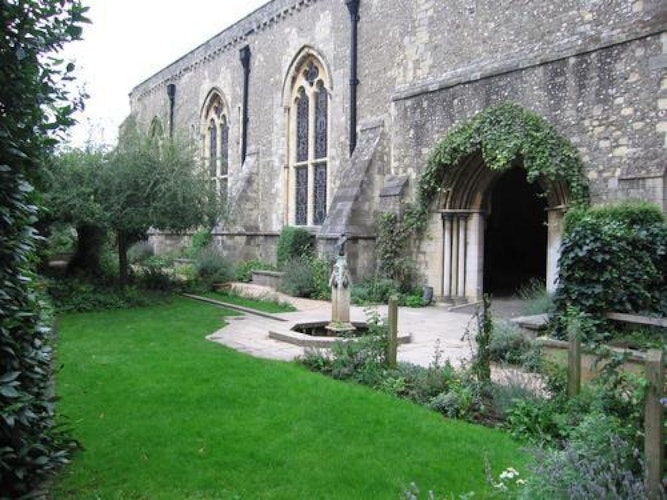

Introduction
Queen Eleanor's Garden is a re-created, authentically planted, medieval castle garden of the 13th century in the time of Henry III and Edward I and their Queens.
The Queen's Herber is a trellised corner with a floor of mixed wild flowers, turf seats and octagonal table. Queen Eleanor's Coat of Arms is on the door arch. There is a wall turf seat as commonly seen in manuscripts of the time, and a bench made from 200 year old oak and adapted from a nine foot long gothic bench in Winchester Cathedral. The Pentice could have connected the kitchens to the Great Hall and its oak shingles show how the Hall would have been roofed. All the plants, mostly native, would have been grown in 13th-century gardens.
- Visitor Access, Directions & Contacts
Telephone
44 01794 505080Access contact details
The site is open daily between 10 am and 5 pm. Please see: http://www.hants.gov.uk/greathall/visitorinfo.html
Directions
The Great Hall and its garden are 10 minutes walk from Winchester Railway Station. For details see: http://www.hants.gov.uk/greathall/great-hall-map.html
Other Websites
- History
The garden is named after Queen Eleanor of Provence, wife of Henry III, and her daughter-in-law Queen Eleanor of Castile, wife of Edward I.
This south side of the Great Hall was originally the front of the Hall and the wall facing it is the base of the King's House, never completed, built by Sir Christopher Wren. Little is known of Winchester Castle gardens apart from a mention of herbaria, columbaria and falcon houses, so the garden has been created from descriptions of other royal residences of the 13th century.
Its creation was a joint venture between Hampshire County Council and Hampshire Gardens Trust. It was designed by Dr Sylvia Landsberg with John Harvey as consultant and co-designer. It was opened by HM the Queen Mother on 8 July, 1986, as part of the Domesday 900 celebrations. It is the first example of an authentically constructed and planted medieval garden in Britain, so is of great educational value.
- Associated People
- Features & Designations
Designations
Conservation Area
Scheduled Ancient Monument
Features
- Garden Bench
- Description: There is a bench made from 200 year old oak and adapted from a nine foot long gothic bench in Winchester Cathedral.
- Earliest Date:
- Latest Date:
- Arch
- Description: Queen Eleanor?s Coat of Arms is on the door arch.
- Earliest Date:
- Latest Date:
- Hedge
- Description: Bay hedges
- Fountain
- Description: The fountain is copied from the tomb of Peter de Sancta Mario, 1296, in St Cross Hospital.
- Camomile Lawn
- Hall (featured building)
- Earliest Date:
- Latest Date:
- Arbour
- Description: A tunnel arbour is made from curved tree poles, tied together, supporting vines, roses and honeysuckle.
- Garden Seat
- Description: There is a wall turf seat as commonly seen in manuscripts of the time.
- Key Information
Type
Garden
Purpose
Ornamental
Principal Building
Heritage Site
Survival
Extant
Open to the public
Yes
- References
Contributors
Hampshire Gardens Trust